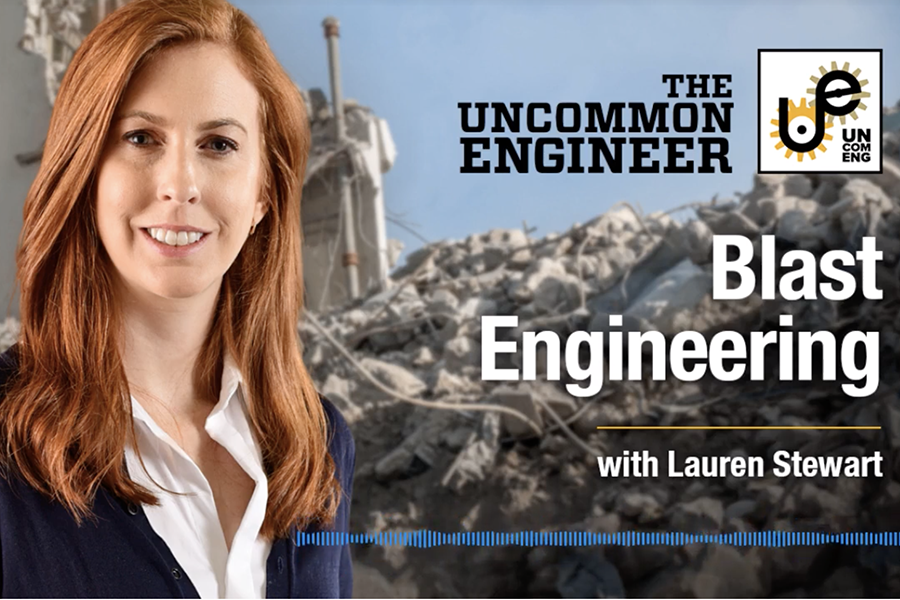
Usually when researchers need to understand what happens when you blow something up, they have to go outside and actually, well, blow it up. Lauren Stewart has a unique lab where she can simulate blasts inside, which means she can drive the develop new technologies and materials more cheaply and quickly.
Stewart sat down with College of Engineering Dean Steven McLaughlin on The Uncommon Engineer podcast to explain how she does her work and the impact it can have.
We're doing all of this in the laboratory really, really quickly. All of this happens in less than about 5 milliseconds, so faster than your eye can refresh. So we're dumping a huge amount of energy with hydraulics very quickly onto structures, and that gives us the same force time history that you would see in an actual explosive event. The good thing with that is that we don't have a big dust cloud, and we don't have a fireball. So we can put instrumentation on there and high-speed cameras, and we can see what happens to the infrastructure during a test, which normally you can't see or record during an actual event.
So Georgia Tech is pretty lucky that we have one of these here. There's only a few and we've been able to get some really new and interesting data.
I think it's easy to show. It's incredibly difficult to convince people that it's the same. So it's taken about a decade to collect enough data and enough validation. So like, actual live explosive data that we've been able to show these two tests are similar, here's why, and convince people that that's actually true.
